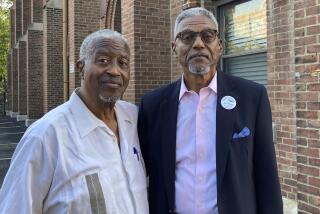Action Urged to Sort Out Glut of Toxic-Injury Lawsuits
In its continuing study of asbestos litigation throughout the country, the Rand Corp.’s Institute for Civil Justice today called for a national commission to address problems of massive toxic-injury lawsuits.
The need for a commission to devise priorities for handling such mass litigation has been clearly demonstrated by the tens of thousands of asbestos lawsuits which have taxed court systems and produced highly divergent results, said Deborah R. Hensler, leader of a four-member research team that produced the report.
The report also noted that many lawyers involved in the asbestos litigation are “beset by conflicting interests that often transcend the interests of their clients” because they often stand to benefit financially if the cases drag on, rather than reach a conclusion.
Procedures for settling large numbers of asbestos cases together, the report noted, raise such conflict-of-interest questions for attorneys. For example, if a block settlement for millions of dollars is negotiated, with the lawyer dividing the amount among several plaintiffs, the lawyer may have a larger financial stake in the settlement than any of his clients.
“The resolution of disputes arising from latent injuries due to toxic substances and products confronts us with unprecedented social, economic and legal problems as well as with potentially massive expenditures of time, brainpower, effort and money,” said institute director Gustave H. Shubert in an introduction to the report, released today.
Without a commission to offer direction, Shubert said, asbestos or similar massive litigation could “destroy our already inadequate capability to deliver justice at acceptable levels of equity and efficiency.”
Such a commission, the Santa Monica researchers suggested, should be modeled on the National Commission on Causes and Prevention of Violence or the National Advisory Commission on Civil Disorders of the late 1960s.
Panel Makeup Suggested
Hensler and her colleagues suggested that the proposed commission include physical scientists, social scientists, legal scholars and others representing industrial, consumer, and governmental interests. Although people familiar with the asbestos litigation should be included, the researchers said, they should not be allowed to dominate it.
“For them,” Hensler noted in the report, “the stakes are too high to expect sufficient attention to a promotion of the general welfare.”
The report was based on the group’s latest look at asbestos litigation filed in federal courts in Northern California, Massachusetts, New Jersey, eastern Pennsylvania and eastern Texas, and state courts in Middlesex County, N.J., Philadelphia, Oakland, Los Angeles and San Francisco.
An earlier Rand report showed that $1 billion had been spent on legal expenses and in compensation to asbestos victims, with victims receiving about 40% of the money and the rest going to lawyers and legal costs. The new report estimated that future costs could range from $4 billion to $87 billion.
The high costs of the litigation have forced several asbestos manufacturers into bankruptcy, jeopardizing victims’ claims.
In most of the 10 courts studied, Hensler reported, inadequate court resources have been allocated to handle the thousands of asbestos cases, and, as a result, those cases lag behind other types of lawsuits in reaching trial or settlement.
Only a few of the more than 30,000 cases filed in the last 15 years have been resolved, the report said, and victims have received widely varying amounts of money, often with little relationship to the extent of their injuries.
“A close analysis of asbestos litigation, its problems and alternatives, offers strong evidence that as a society we have not thought enough about the issues that mass latent injury torts pose for the civil justice system and for us all,” Hensler wrote in urging creation of the commission.
More to Read
Sign up for Essential California
The most important California stories and recommendations in your inbox every morning.
You may occasionally receive promotional content from the Los Angeles Times.










